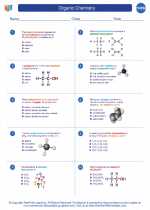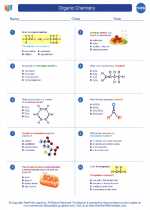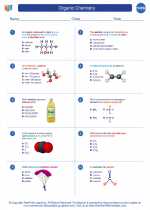Acid-Base Reactions
Overview
An acid-base reaction is a chemical reaction that occurs between an acid and a base. These reactions are also known as neutralization reactions, as they result in the formation of water and a salt.
Key Concepts
- Acids: Acids are substances that donate protons (H+) in a chemical reaction. They are characterized by their sour taste, ability to turn blue litmus paper red, and their ability to react with metals to produce hydrogen gas.
- Bases: Bases are substances that accept protons (H+) in a chemical reaction. They are characterized by their bitter taste, slippery feel, and their ability to turn red litmus paper blue.
- Neutralization: In an acid-base reaction, the acid and base neutralize each other, forming water and a salt.
- pH Scale: The pH scale is a measure of the acidity or basicity of a solution. Acids have a pH less than 7, while bases have a pH greater than 7. A pH of 7 is considered neutral.
Example Reaction
An example of an acid-base reaction is the reaction between hydrochloric acid (HCl) and sodium hydroxide (NaOH) to form water (H2O) and sodium chloride (NaCl), as shown in the balanced chemical equation:
2HCl + 2NaOH → 2H2O + 2NaCl
Study Guide
When studying acid-base reactions, it's important to understand the properties of acids and bases, as well as how to identify them in chemical equations. Here are some key points to focus on:
- Define what makes a substance an acid or a base, and provide examples of each.
- Explain the concept of neutralization and how it relates to acid-base reactions.
- Understand how to balance chemical equations for acid-base reactions.
- Discuss the pH scale and its relevance to acid-base chemistry.
By mastering these concepts, you'll be well-prepared to understand and solve problems related to acid-base reactions in chemistry.
[Acid-base Reaction] Related Worksheets and Study Guides:
.◂Chemistry Worksheets and Study Guides High School. Organic Chemistry
Worksheet/Answer key Organic Chemistry
Organic Chemistry  Worksheet/Answer key
Worksheet/Answer key Organic Chemistry
Organic Chemistry  Worksheet/Answer key
Worksheet/Answer key Organic Chemistry
Organic Chemistry 

 Worksheet/Answer key
Worksheet/Answer key
 Worksheet/Answer key
Worksheet/Answer key

The resources above cover the following skills:
PHYSICAL SCIENCE (NGSS)
Matter and Its Interactions
Students who demonstrate understanding can:
Plan and conduct an investigation to gather evidence to compare the structure of substances at the bulk scale to infer the strength of electrical forces between particles.